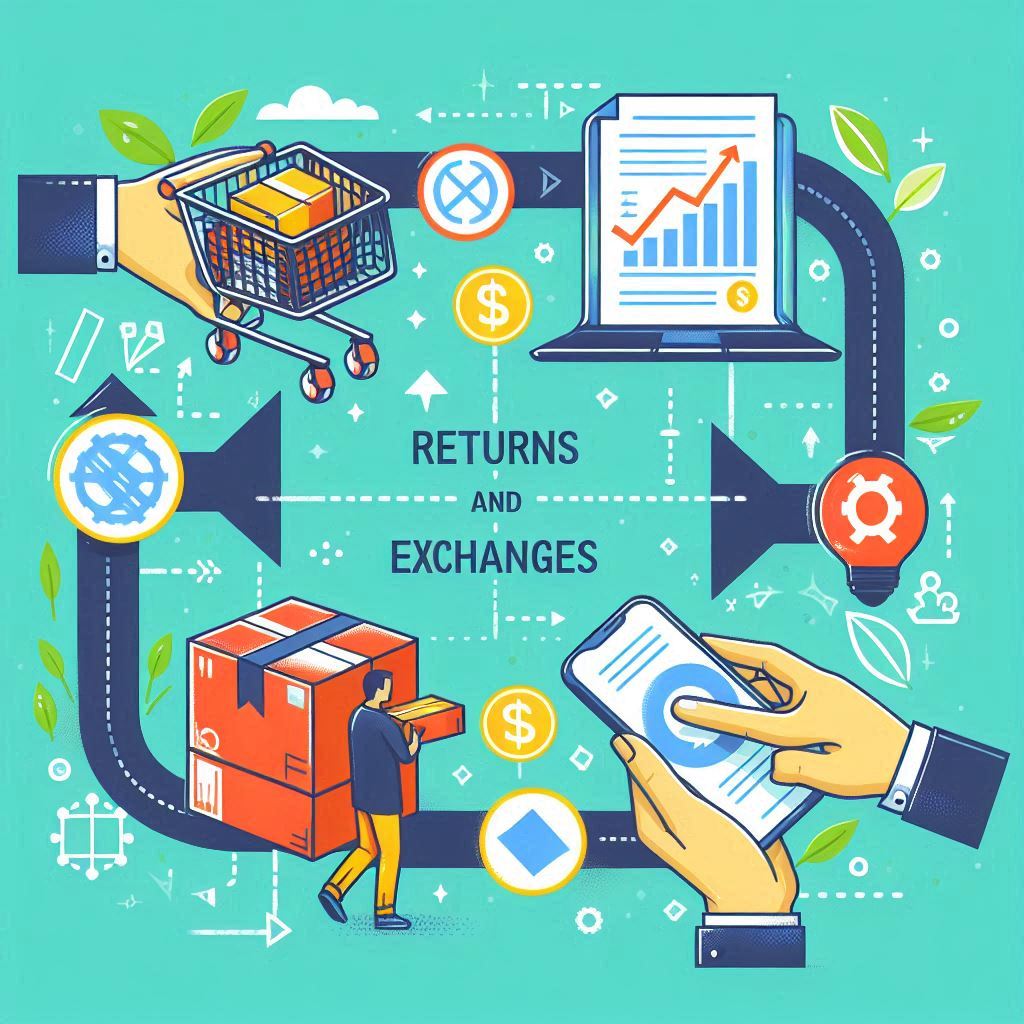Introduction
Building a solid return and exchange policy is essential for any retail business, especially in today’s competitive market. A well-crafted policy not only enhances customer satisfaction but also fosters trust and loyalty. This blog will explore the key elements of effective returns and exchanges, providing insights into creating a hassle-free experience for both customers and retailers.
Building Trust with Hassle-Free Return Policies
A seamless return and exchange policy can significantly boost customer trust. When customers know they can return items easily, they are more likely to make a purchase. Research shows that most customers would not return to a retailer after an unfriendly return experience. Therefore, establishing a clear and customer-friendly policy for returns and exchanges is crucial for retaining customers.
Creating a Clear Returns and Exchanges Policy
Defining Return Windows and Conditions: Setting Expectations
The first step in crafting a return policy is to define the return window. Typically, businesses offer a 30-day period for returns and exchanges, but this can vary based on the nature of the products. Clearly stating the conditions under which returns are accepted, such as the item being unused and in original packaging, helps set expectations.
How to Communicate Your Return Policy to Customers Effectively
Visibility is key. Ensure your return and exchange policy is easily accessible on your website, ideally linked at checkout and in the footer of your site. Use simple language to describe the policy, avoiding jargon that might confuse customers. A well-structured policy should be easy to read and understand, allowing customers to quickly grasp the return process.
Streamlining the Returns Process: Step-by-Step Guide
Offering Multiple Return Options: In-Store, By Mail, or Drop-Off
To enhance customer convenience, offer multiple return options. Customers should have the choice to return items in-store, by mail, or at designated drop-off points. This flexibility not only improves customer satisfaction but also encourages repeat purchases, making the returns and exchanges process smoother.
Automating Return Requests: Using Technology for Speed and Convenience
Implementing technology to automate return requests can save time and streamline the process. A user-friendly return portal allows customers to initiate returns and exchanges easily, track their requests, and receive updates on their return status. This tech-driven approach minimizes frustration and enhances the overall customer experience.

Handling Exchanges: Ensuring a Smooth Customer Experience
Simplifying the Exchange Process: Instant Product Swaps
Exchanges should be as straightforward as returns. Consider allowing customers to swap items instantly, especially for popular products. This not only reduces the hassle of returning an item but also encourages customers to make another purchase, turning a potential loss into a sales opportunity in the returns and exchanges process.
Managing Inventory and Stock Levels for Fast Replacements
Effective inventory management is crucial for handling exchanges efficiently. Ensure that stock levels are monitored closely, allowing for quick replacements. This will minimize delays and enhance the customer experience, making them more likely to return in the future.
Managing Costs and Reducing Fraud in Returns
Minimizing Return-Related Costs: Packaging, Shipping, and Restocking
While returns and exchanges are a necessary part of retail, they can be costly. To minimize expenses, consider implementing a restocking fee for certain items or offering store credit instead of cash refunds. Additionally, encourage customers to return items in their original packaging to reduce restocking efforts.
Detecting Fraudulent Returns: Security Measures to Protect Your Business
Fraudulent returns can significantly impact a business’s bottom line. Implementing security measures such as tracking return reasons and analyzing return data can help identify patterns of abuse. By monitoring these metrics, businesses can refine their return policies to deter fraudulent behavior in the returns and exchanges process.
Customer Support and Communication in Returns
How to Provide Excellent Customer Support Throughout the Return Process
Providing exceptional customer support during the return process is vital. Train your staff to handle return inquiries with empathy and efficiency. A positive interaction can turn a potentially negative experience into a loyal customer relationship, especially when it comes to returns and exchanges.
Tracking and Updating Customers on the Status of Their Returns
Keeping customers informed about their return status is essential. Use automated emails to notify customers when their return is received and processed. This transparency builds trust and reassures customers that their concerns are being addressed, making the returns and exchanges experience more positive.
Analyzing Return Data for Business Improvement
Identifying Common Return Reasons
Analyzing return data can provide valuable insights into customer behavior. By identifying common reasons for returns, businesses can adjust product listings and descriptions to better meet customer expectations. This proactive approach can help reduce return rates over time, improving the returns and exchanges process.
Using Return Metrics to Refine Your Product Offerings and Customer Experience
Return metrics should be used to refine product offerings and enhance the overall customer experience. By understanding which products are frequently returned, businesses can make informed decisions about inventory and marketing strategies, ultimately improving the returns and exchanges process.
Conclusion
In conclusion, a well-defined return and exchange policy is essential for fostering customer loyalty and trust. By creating a clear, customer-friendly policy and streamlining the returns and exchanges process, retailers can turn potential losses into opportunities for growth. Remember, effective management of returns and exchanges not only improves customer satisfaction but also enhances your brand’s reputation in the competitive retail landscape. With a focus on customer-centric policies, businesses can grow in today’s market, ensuring that returns and exchanges become a positive aspect of the shopping experience.
At Miodeal, we understand that managing returns and exchanges efficiently is crucial for your online market success. Don’t let returns and exchanges become a hassle—contact us today!
FAQs
What is a return and exchange policy?
A return and exchange policy outlines the rules and procedures for customers to return or exchange items they purchased.
How long do customers have to return an item?
The return period can vary by retailer, but a common timeframe is 15 days from the date of delivery. Some retailers may offer longer periods, while others may have shorter ones.
Are there any items that cannot be returned or exchanged?
Yes, certain items may be ineligible for returns or exchanges, such as final sale items, personalized products, or items that have been opened or used.
How can customers initiate a return or exchange?
Customers can typically initiate a return or exchange by contacting customer service, filling out a return request form on the retailer’s website, or following the instructions provided with their order confirmation.













